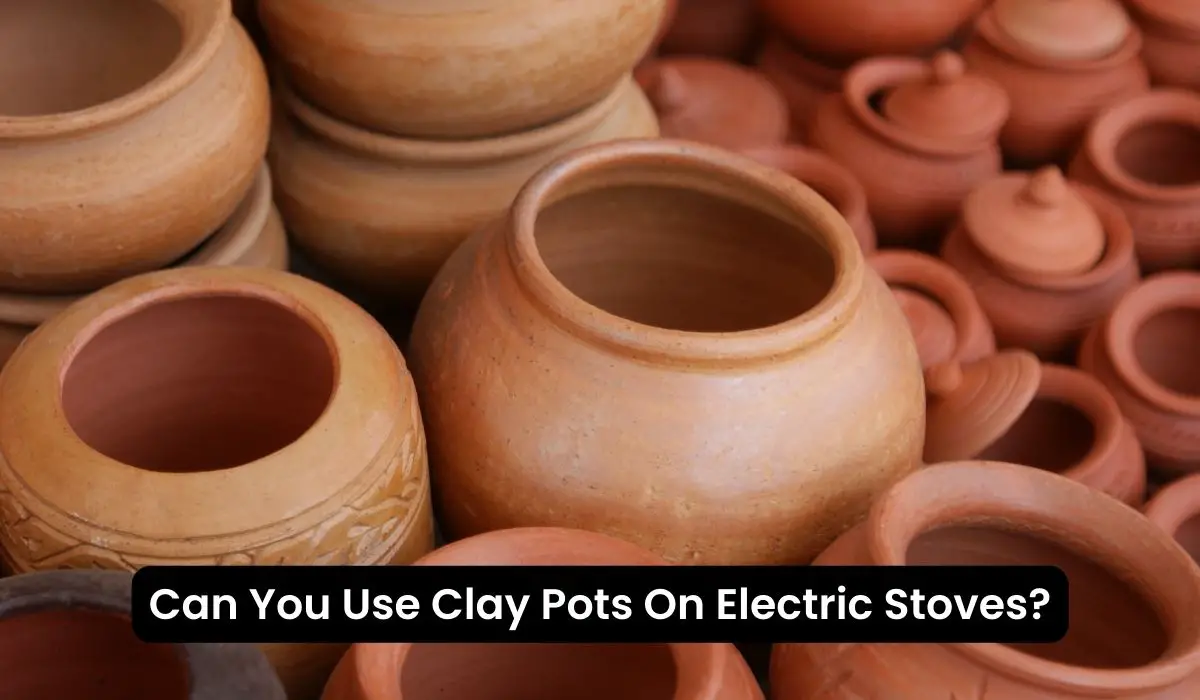When it comes to cooking, the choice of cookware plays a vital role in achieving delightful culinary creations. In recent years, there has been a growing interest in using traditional clay pots for their unique properties and the ability to infuse dishes with authentic flavors. However, as electric stoves have become increasingly popular in modern kitchens, a common question arises: Can you use clay pots on electric stoves?
In this article, we delve into the compatibility between clay pots and electric stoves, addressing concerns about safety, heat distribution, and the immense culinary possibilities that arise from this intriguing combination.
So, Let’s start.
Table of Contents
Can You Use Clay Pots On Electric Stoves?
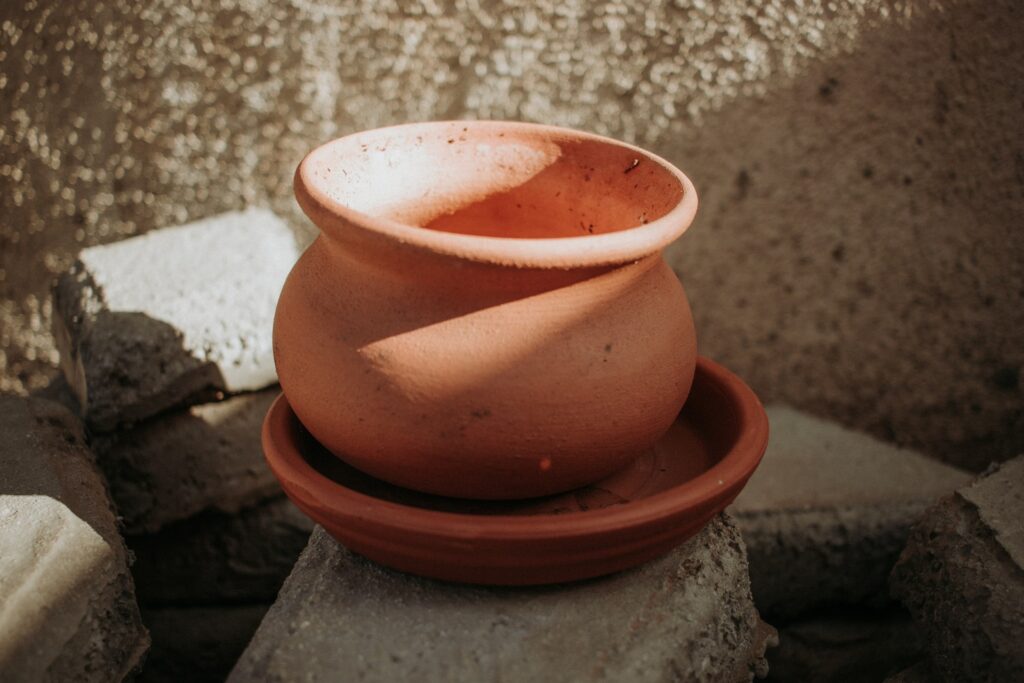
When using clay pots on electric stoves, it’s essential to consider the type of clay used in the pot’s construction. Some clay pots are specifically designed for stovetop use, while others may be intended for oven or open-fire cooking only. It is crucial to read the manufacturer’s instructions and recommendations to ensure the pot is suitable for use on electric stoves.
The compatibility between clay pots and electric stoves largely depends on the stovetop’s heat source and the pot’s construction. Electric stoves typically generate consistent and even heat, which can work well with clay pots. However, it is essential to use a heat diffuser or a protective layer, such as a metal trivet or a heat-resistant pad, between the clay pot and the electric coil to prevent direct contact and potential damage to the pot.
However, it’s important to note that clay pots may require special care and attention when used on electric stoves. Extreme temperature changes can cause the clay to crack, so avoiding sudden temperature shifts is recommended. Gradually increasing or decreasing the heat when cooking with clay pots can help mitigate the risk of damage.
Can All Clay Pots Be Used For Cooking?
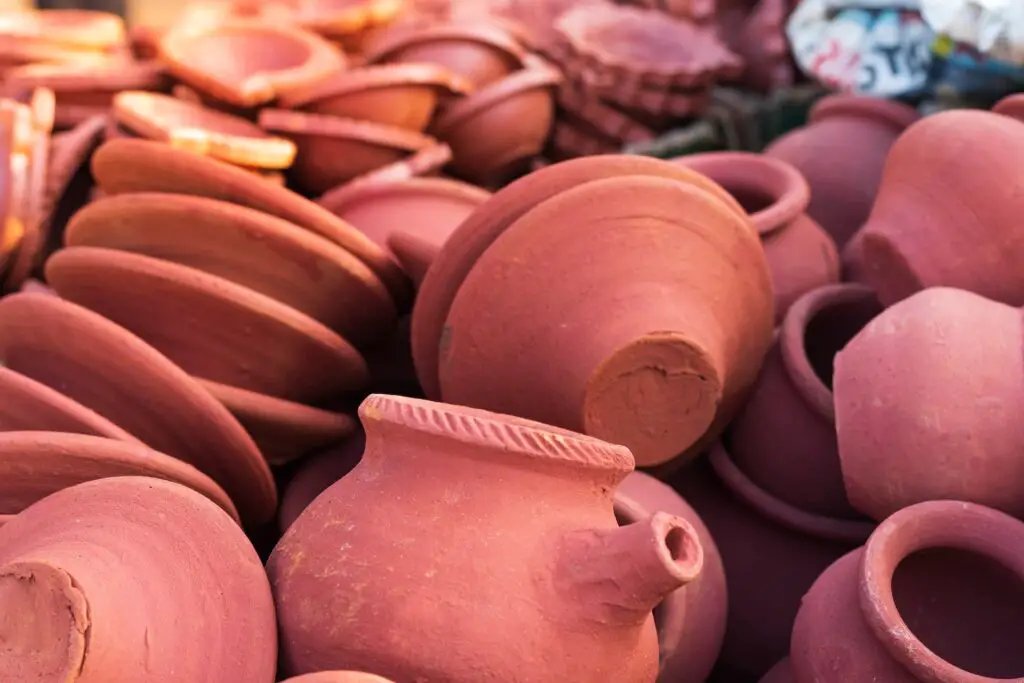
Unlike our everyday kitchen pots, clay pots have unique characteristics and considerations when it comes to cooking. While clay pots are generally excellent for slow and gentle cooking, not all are suitable for stovetop use or high-heat cooking methods. It is essential to understand your specific type of clay pot and its recommended usage to ensure a successful cooking experience.
Clay pots are traditionally designed for low to medium-heat cooking. The porous nature of clay allows for gradual and even heat distribution, which is ideal for simmering, braising, and slow-cooking dishes. Unlike metal or non-stick pans that withstand high temperatures, clay pots are more delicate and can crack or break if exposed to sudden or extreme heat changes. Therefore, using low to medium heat when cooking with clay pots is crucial to prevent potential damage.
Cooking on low heat with clay pots not only helps preserve the integrity of the pot but also allows the flavors to develop and intensify over time. The slow and gentle cooking process in clay pots helps infuse the food with unique rustic flavors, making each dish a delight to savor. The porous nature of the clay also allows for natural steam circulation, retaining moisture and enhancing the tenderness of meats and vegetables.
When using clay pots for cooking, it is essential to note that pure clay pots are unsuitable for stovetop use. Some clay pots are explicitly designed for oven use or open-fire cooking methods, such as clay pots used in traditional clay ovens or on charcoal grills. These pots may not have the structural integrity to withstand direct heat from stovetop burners.
To ensure that your clay pot is suitable for stovetop cooking, it is advisable to check the manufacturer’s instructions and recommendations. Look for pots that explicitly state they are safe for stovetop use or provide specific guidelines for stovetop cooking. Additionally, some clay pots may come with a metal or heat-resistant base, making them more suitable for electric or gas stovetops.
4 Types Of Clay Pots: Which Is Best For Cooking?
There are 4 types of clay pots that can be used in cooking:
1. Earthenware Clay Pots
Earthenware clay pots are the most common clay pots used for cooking. They are made from natural clay and have a porous texture. These pots are excellent for slow and gentle cooking methods, such as simmering, braising, and stewing. Earthenware clay pots provide good heat distribution and retention, allowing flavors to develop and intensify. However, they are unsuitable for high-heat cooking or direct stovetop use, as they can be more prone to cracking or breaking due to sudden temperature changes.
2. Terracotta Clay Pots
Terracotta clay pots are known for their reddish-brown color and rustic appearance. They are made from a specific type of clay fired at a relatively low temperature. Terracotta pots suit various cooking methods, including baking, roasting, and slow cooking. They distribute heat evenly, allowing for gentle cooking and the development of rich flavors. Terracotta pots can be used in ovens, on stovetops with a heat diffuser, or over open fires. However, they should be appropriately seasoned before use to enhance their non-stick properties and prevent cracking.
3. Stoneware Clay Pots
Stoneware clay pots are fired at high temperatures, resulting in a denser and more durable pot than earthenware or terracotta pots. These pots are excellent for oven use and can withstand higher temperatures, making them suitable for baking, roasting, and grilling. Stoneware pots provide excellent heat retention and even heat distribution, allowing for uniform cooking. They are versatile and can be used for both savory and sweet dishes. However, they may be heavier than other types of clay pots and require proper handling to avoid breakage.
4. Flameproof Clay Pots
Flameproof clay pots, or fireproof or fireclay pots, are explicitly designed for high-heat cooking methods, such as direct stovetop use or cooking over an open flame. These pots are made from a particular type of clay that can withstand extreme temperatures without cracking or breaking. Flameproof clay pots are often used for dishes that require intense heat, such as stir-frying or searing. They offer excellent heat retention and quick heat distribution, allowing for efficient cooking. However, handling flameproof clay pots with care is essential, as they can become very hot during cooking.
The best type of clay pot for cooking depends on the specific culinary needs and preferences. Earthenware and terracotta clay pots are ideal for slow and gentle cooking, while stoneware clay pots offer versatility and durability. Flameproof clay pots are designed for high-heat cooking and direct stovetop use. Consider the cooking techniques you frequently use and choose a clay pot that suits your needs, always considering the manufacturer’s recommended usage and care instructions.
How Much Heat Can Clay Pots Withstand:
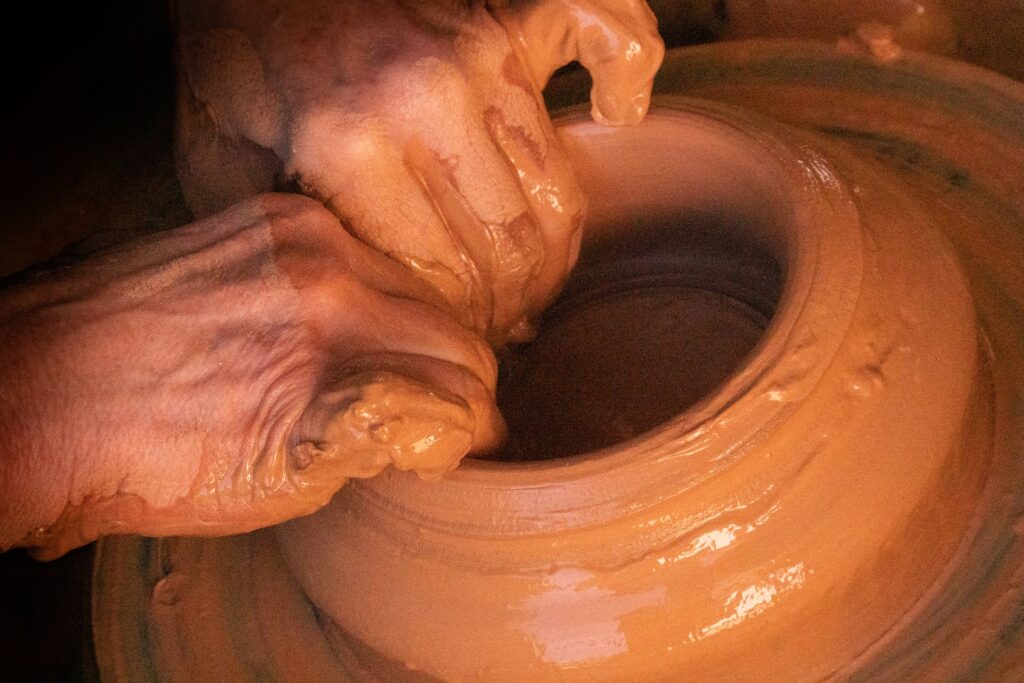
The heat resistance of clay pots varies depending on the type of clay used, the firing process, and the pot’s thickness. While clay pots are generally durable and can withstand moderate heat, it’s crucial to understand their limitations to prevent any potential damage or accidents.
Most clay pots, such as earthenware and terracotta, are designed for slow and gentle cooking, making them unsuitable for high-heat applications. These pots typically have lower heat resistance and may crack or break if exposed to sudden or extreme temperature changes. It is essential to avoid subjecting clay pots to direct flames or placing them directly on stovetop burners without proper precautions.
On the other hand, some types of clay pots, like flameproof or fireclay pots, are specifically manufactured to withstand high temperatures. These pots are made from clay that has been processed and fired at high temperatures, resulting in a more heat-resistant and durable pot. Flameproof clay pots can handle direct stovetop use and even open-flame cooking without the risk of cracking or breaking.
To ensure the longevity of your clay pot and prevent mishaps, it’s recommended to follow the manufacturer’s instructions regarding heat resistance and usage guidelines. Generally, clay pots can withstand temperatures ranging from around 400°F (200°C) to 600°F (315°C) in most cases. However, referring to the specific heat resistance information the manufacturer provides is always wise.
Using a heat diffuser is an effective way to protect clay pots from direct heat sources. A heat diffuser, such as a metal trivet or a flame tamer, helps distribute the heat evenly and reduces the risk of hotspots that can lead to thermal shock and pot damage. This is especially important when using clay pots on electric stoves or cooking with intense heat.
Remember that gradual temperature changes are essential when using clay pots. Avoid directly exposing a cold clay pot to high heat or transferring a hot clay pot to an excellent surface. Sudden temperature fluctuations can cause thermal shock and result in cracks or breakage.
Tips For Using Clay Pots On Electric Stoves:
There are 6 tips that you should consider when using clay pots on electric stoves:
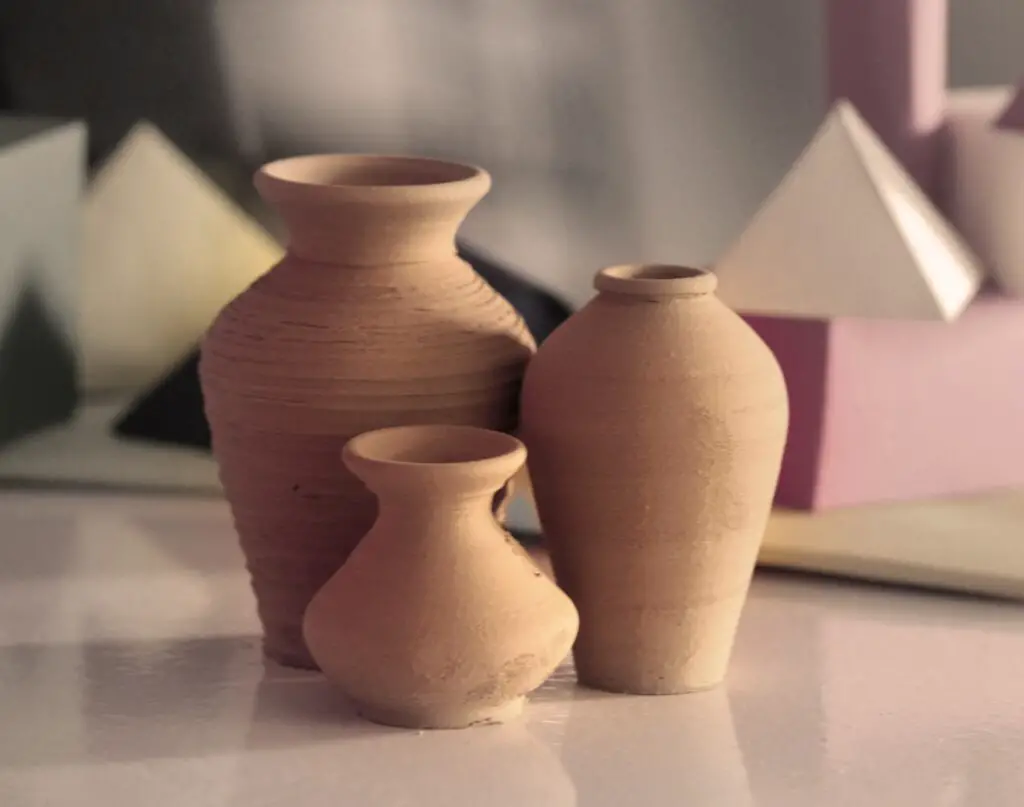
1. Choose the Right Clay Pot
When using clay pots on electric stoves, selecting a pot specifically designed for stovetop use is essential. Look for pots labeled as safe for stovetop cooking or check the manufacturer’s instructions for guidance. These pots are typically made from clay that can withstand the direct heat from electric stovetop burners without cracking or breaking.
2. Use a Heat Diffuser
A heat diffuser protects your clay pot from direct contact with the electric coil. A heat diffuser helps distribute the heat evenly and reduces the risk of hotspots that can lead to pot damage. Place the heat diffuser on the electric burner and the clay pot on top. This creates a buffer zone and prevents direct heat exposure to the pot.
3. Start with Low to Medium Heat
Clay pots are not meant for high-heat cooking, so using low to medium-heat settings on your electric stove is essential. This ensures a gentle and gradual increase in temperature, allowing the clay pot to heat up slowly and evenly. Cooking on low to medium heat also helps infuse the food with rich flavors and prevents the pot from experiencing a thermal shock.
4. Preheat the Clay Pot
Before adding any ingredients, preheat the clay pot on the electric stove. This step helps the pot gradually adjust to the heat and minimizes the risk of thermal shock. Place the empty clay pot on the heat diffuser over low heat for a few minutes until it feels warm. Once preheated, you can add your ingredients and cook as usual.
5. Avoid Sudden Temperature Changes
Clay pots are sensitive to extreme temperature changes, so it’s crucial to avoid sudden shifts in heat. When transferring the pot from the stovetop to an excellent surface or vice versa, use caution and allow the pot to cool down or heat up gradually. Sudden temperature changes can generate thermal shock and result in cracks or breakage.
6. Handle with Care
Clay pots can become hot during cooking, so utilize oven mitts or pot holders when taking them. Avoid placing the hot clay pot directly on delicate surfaces to prevent any potential damage. Additionally, be mindful of the weight of the clay pot, as they can be heavier than other types of cookware.
Also Read: Can Electric Stoves Explode
Advantages of Using Clay Pot Cooking on Electric Stoves:
There are 6 advantages of using clay pot cooking on electric stoves:
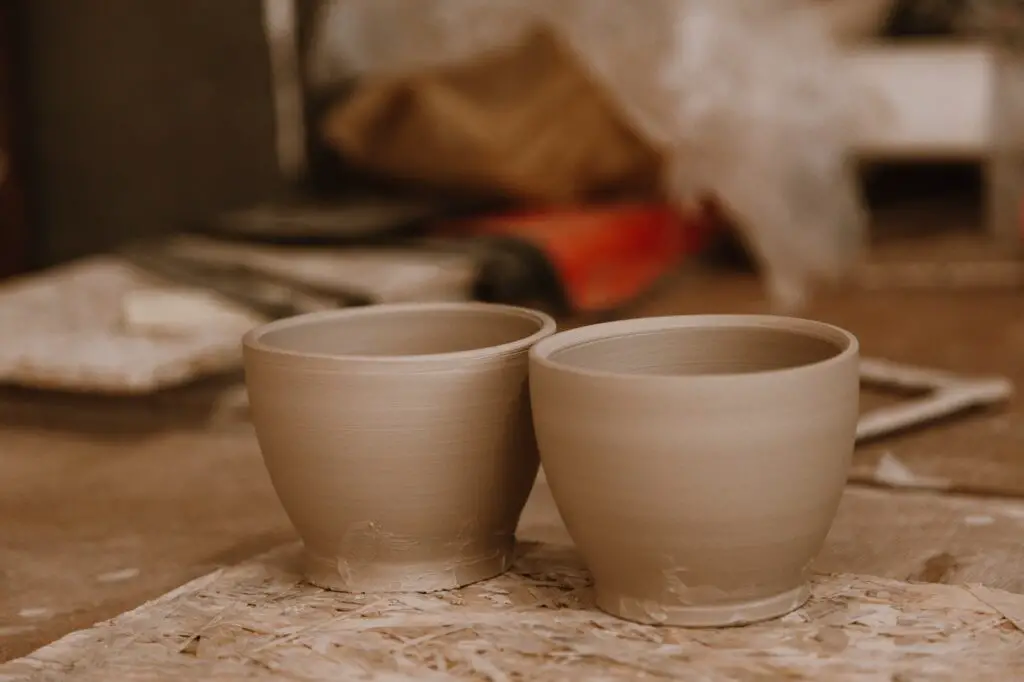
1. Enhanced Flavor Infusion
One of the key advantages of using clay pot cooking on electric stoves is its enhanced flavor infusion. Clay pots have porous walls allowing gentle heat circulation and moisture retention. This slow and steady cooking process helps flavors meld together, resulting in rich, aromatic, and intensely flavorful dishes. The natural clay material adds a unique earthy taste to the food, elevating the dining experience.
2. Moist and Tender Results
The porous nature of clay pots helps trap and retain moisture during cooking. As the food simmers and steams within the pot, it becomes moist and tender, ensuring succulent and juicy results. This is particularly beneficial for meats, poultry, and vegetables that benefit from clay pots’ slow and gentle cooking. The result is tender, evenly cooked dishes and full of natural juices.
3. Even Heat Distribution
Clay pots excel in distributing heat evenly, which is a crucial factor for achieving consistent cooking results. When placed on an electric stove, the clay pot absorbs and distributes heat throughout its walls, ensuring the food cooks uniformly. This prevents hotspots and eliminates the need for constant stirring or monitoring, allowing you to focus on other kitchen tasks while your meal simmers to perfection.
4. Retention of Nutrients
Clay pots are known for their capacity to retain the nutritional value of ingredients. The gentle cooking process helps preserve vitamins, minerals, and other essential nutrients that can be lost with other cooking methods. The minimal use of oils or fats in clay pot cooking further enhances the health benefits, making it an ideal choice for those seeking nutritious and wholesome meals.
5. Energy Efficiency
Using clay pots on electric stoves can contribute to energy efficiency in the kitchen. The heat-retention properties of clay pots mean that once the desired cooking temperature is reached, you can reduce the heat to low or even turn off the stove entirely. The retained heat in the clay pot will continue to cook the food, reducing the reliance on continuous energy consumption. This can show power savings and lower utility bills over time.
6. Versatility and Adaptability
Clay pots are versatile cooking vessels that can be used for various dishes and cuisines. From hearty stews and braises to savory rice dishes and even baking, clay pots can easily handle various cooking techniques. They can be used on electric stoves, making them accessible to a broader range of home cooks. Their adaptability allows for experimenting with different recipes and exploring diverse culinary traditions.
Disadvantages of Using Clay Pot Cooking on Electric Stoves:
There are 6 disadvantages of using clay pot cooking on electric stoves:
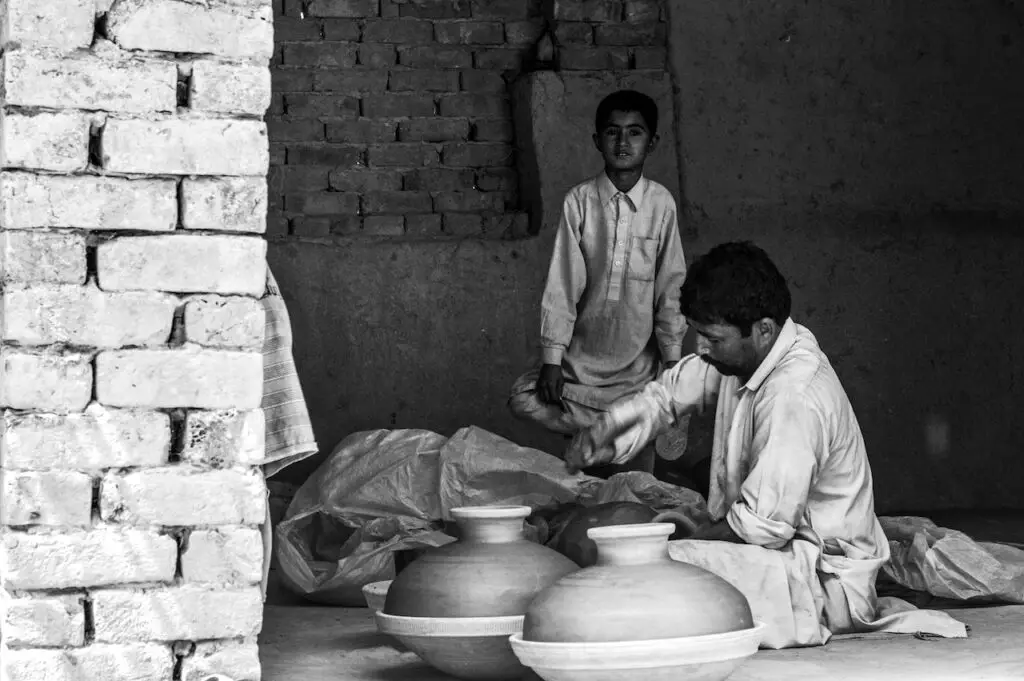
1. Fragility and Susceptibility to Damage
One of the main disadvantages of using clay pot cooking on electric stoves is the fragility of clay pots. Clay pots are more susceptible to cracking or breaking than other cookware materials, especially when exposed to sudden temperature changes. Electric stoves can generate intense and direct heat, increasing the risk of thermal shock if the pot is not handled carefully. The delicate nature of clay pots requires careful handling and storage to prevent damage.
2. Limited Compatibility with High-Heat Cooking
Clay pots must be better suited for high-heat cooking methods, which can disadvantage specific recipes and cooking techniques. Electric stoves often provide higher heat levels, and using a clay pot at these temperatures may lead to pot damage or even accidents. Clay pots are best suited for slow and gentle cooking and ideal for simmering, braising, and stewing. However, if you frequently require intense heat for techniques like searing or stir-frying, there may be more suitable options than clay pots.
3. Longer Cooking Times
Due to their insulating properties, clay pots typically have longer cooking times than other cookware materials. While this slow cooking can be advantageous for specific dishes, it may not be ideal for those who desire quick and efficient meal preparation. If you need more time or prefer faster cooking, clay pot cooking on electric stoves may be a better time-efficient choice.
4. Special Care and Maintenance
Clay pots require special care and maintenance compared to other types of cookware. They typically must be seasoned before the first use and periodically re-seasoned to maintain their non-stick properties. Also, hand-washing clay pots using mild soap and warm water should be hand-washed, as harsh detergents or dishwasher use can damage the porous clay surface. This extra care and maintenance is a disadvantage for those seeking more convenient and low-maintenance cookware options.
5. Weight and Bulkiness
Clay pots can be heavy and bulky compared to other cookware materials. This can make them challenging to handle, incredibly when filled with food or transferring them to and from the stove. The weight and size of clay pots may be a disadvantage for individuals with physical limitations or those who prefer lightweight and easy-to-handle cookware.
6. Limited Stovetop Compatibility
While clay pots can be used on electric stoves, they may only be compatible with some types of electric stovetops. For example, induction cooktops, which rely on magnetic fields to generate heat, may not work effectively with traditional clay pots. It’s essential to ensure that your clay pot and electric stove are compatible before using them together.
Conclusion:
At the end of this article, we explored whether clay pots can be used on electric stoves. After careful consideration, it is clear that while clay pots are traditionally used on open flames or in ovens, they can also be safely used on electric stoves with a few precautions. By ensuring that the clay pot is appropriately seasoned, placing a heat diffuser or trivet on the electric burner, and maintaining a low to medium heat setting, you can enjoy the benefits of cooking in clay pots on your electric stove.
However, it is essential to be mindful of the pot’s quality, as low-quality clay pots may crack or break when exposed to sudden temperature changes. With proper care and attention, using clay pots on electric stoves can add a touch of tradition and enhance the flavors of your culinary creations.
Are Clay Pots Heat Resistant?
Yes, clay pots are generally heat resistant, but their resistance varies based on the quality of the clay and the temperature changes they are subjected to.
Does Clay Melt In Heat?
No, clay does not melt in the heat. Instead, it undergoes vitrification, becoming hardened and retaining its shape. However, extreme heat can cause the clay to crack or break, so proper care and temperature regulation are essential when using clay in high-temperature environments.
What Temperature Will Clay Crack?
Clay can start cracking at temperatures above 1800 F. The exact temperature threshold varies depending on the type of clay and its composition, as well as the speed and intensity of the temperature change. It’s crucial to handle and fire clay pottery with care to prevent unwanted cracking.
